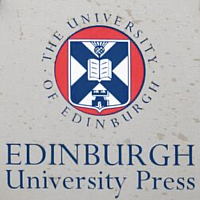A collective initiative led by Véronique Lane (Lancaster University)
International catalogue of literary back-translations
This is the companion website of Literary Back-Translation, a book published by Edinburgh University Press.
What is "literary back-translation"?
A concept, a practice, and a philosophy; it is a non-linear way of approaching translation:
"A literary back-translation is created when a text or part of a text, which has been translated, is itself translated back into the language of its initial composition" (as defined and theorized in the book).
*
Why does it matter?
While some deem it dangerous for literary texts to travel "the wrong way", or in too many ways as it were, I would invite readers to consider the larger conception of literature entailed by the publication of back-translations. That is, literary back-translations are not only curious oddities; their very existence reveals translation as less teleological a process than has long been assumed; a process that is open-ended and that should therefore not be approached through the limiting lens of "restitution", but as a way to enable literary works to travel in both directions, with no preconceived trajectory.
*
Is it ethical?
Yes, as long as publishers acknowledge that literary back-translations are back-translations: legal beneficiaries are usually, and understandably, reassured by prefaces, footnotes and forewords contextualizing the text presented to readers. The Introduction of Literary Back-Translation emphasizes that this kind of contextualization is always important when publishing translations, but argues that it becomes imperative with literary back-translations, since they not only involve works with a complex trajectory, but two authors, styles, and textual layers – and both layers need to be historicized and contextualized.
*
A corpus in expansion
My hope when conceiving this collective project five years ago was that the book be an incentive for the constitution of a much larger corpus of literary back-translations crossing countries and centuries, and that back-translations, which have long been overlooked as rather odd anomalies, start being studied as they are by my co-authors and I in the book: as literary texts in their own right.
Here we are reaching out to international web users to expand our bibliography of known literary back-translations.
The analysis of back-translations, of course, requires a lot: time and resources, the mastery of several languages, and awareness of the existence of such texts in the first place.
So if you are reading this, and know of a literary back-translation (as defined above, but not listed in the catalogue), please reach out through the contact form!
The book
“Homing in on what may seem a marginal phenomenon, this thought-provoking book theorizes literary back-translation, questions the directionality of translation, and offers case studies probing into the ideological underpinnings of all translating, including indirect translation and retranslation.” (Theo Hermans, Emeritus Professor, University College London)
“This volume on literary back-translation contributes provocatively to our understanding of what translation is and does. From the Chinese classic Dream of Red Chamber to the poetry and translations of Paul Celan, this collection shows readers how back-translation works.” (Thomas O. Beebee, Professor and Editor of the journal Comparative Literature, Penn State University)
*
Walter Benjamin famously warned against translating translations. Yet, literary back-translations are increasingly published: whether commissioned by publishers to make celebrated translations of literary texts accessible to their initial readership, or sponsored by nations and feminist groups working for the cultural reappropriation of texts that first appeared in translation, back-translations are becoming more and more common. This book argues that the very malaise they generate is their promise: literary back-translations transform our conception of translation itself, through the recognition that translations are literary works in their own right and, as such, also worthy of an afterlife. It thus responds to Maria Timoczko’s call for new approaches enlarging translation, conceptually as well as ideologically. Literary back-translation reveals translation as much less teleological a process than we have tended to assume, a process that should no longer be understood as a balance of forces seeking “restitution” – as if it were possible – but as a way to enable literary works to travel in both directions, with no preconceived trajectory.
Edited by Dr Véronique Lane
Véronique is Lecturer in Comparative Literature and Medical Humanities at Lancaster University, UK. She has edited two collections of essays on literary genealogies and translation for L'Esprit Créateur (2018) and Translation and Literature (2020), and is the author of Literary Translation and Mental Health (also forthcoming from Edinburgh University Press).
*If you know a literary back-translation not listed in the international collective catalogue, please reach out through the contact form!
All contributions are gratefully acknowledged on this website.




